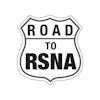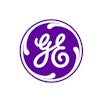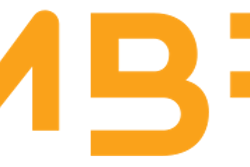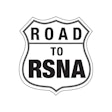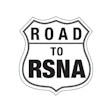
If this year's Minnies awards are any indication, radiology is in the midst of a youth movement. From Most Influential Radiology Researcher to Best New Radiology Device, up-and-coming candidates were picked as final winners by the Minnies expert panel over tried-and-true names.
It's an interesting outcome, because despite its reputation for technological innovation, radiology also is sometimes cast as a specialty that's, well, a bit traditional. This year's Minnies results indicate that medical imaging could be ready for something new.
That said, this year's edition saw a number of trends consistent with previous year's results. For example, "commoditization" was named the Biggest Threat to Radiology for the fifth year running, while "artificial intelligence" was named the Most Significant News Event in radiology for the third straight year.
Below is a list of this year's winners of the Minnies, AuntMinnie.com's campaign to recognize the best and brightest in medical imaging. The 2018 winners triumphed over a field of 220 semifinal candidates in 14 categories, based on nominations submitted by members of AuntMinnie.com. To see the full list of semifinalists, click here. And if you'd like to see our comprehensive list of all the Minnies winners over the past 19 years, click here.
Are you curious about the winners? Check out the profiles below to learn more.
Most Influential Radiology Researcher
Minnies winner: Dr. Andrew Rosenkrantz, NYU Langone Health
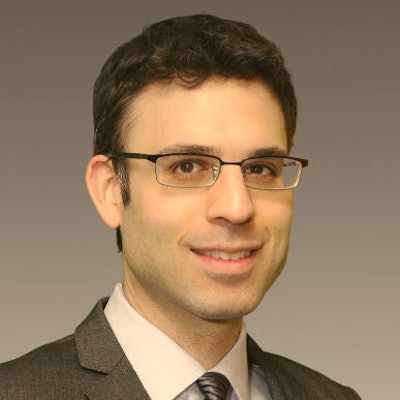 Dr. Andrew Rosenkrantz.
Dr. Andrew Rosenkrantz.Dr. Andrew Rosenkrantz started his research career by investigating clinical topics. But as time went on, he found himself drawn more and more to public policy issues -- to the point that he's become one of the most prolific publishers in radiology.
Rosenkrantz received his medical degree from Albany Medical College in 2003, and among the clinical rotations, he found radiology to be one of his favorites. Sure, the huge machines were fascinating, but it also seemed like the radiologist was at the center of any real clinical investigation.
"There would be really complex patients or tough diagnostic problems, and the patient would have an imaging study that would make everything clear and saved the day," Rosenkrantz told AuntMinnie.com.
For his residency, he picked diagnostic radiology at the University of Maryland. There, he worked under pioneers of radiology research such as Dr. Eliot Siegel, Dr. Stuart Mirvis, and Dr. Charles White. He also witnessed one of radiology's biggest technology booms when multidetector-row CT exploded in leaps and bounds in the early and mid-2000s.
A fellowship in body imaging at New York University (NYU) followed in 2009, and Rosenkrantz was impressed with how the NYU system managed not only to develop technology but also to bring new clinical applications to the bedside. Upon completion of his fellowship he joined NYU Langone Health.
Rosenkrantz's early research efforts focused on clinical topics pertaining to body imaging, such as prostate MRI. But he soon found himself focusing on public policy, including care delivery, health policy, patient-centered care, and economic issues. He credits many of the research collaborators he's worked with for pulling him in the direction of economics.
Which papers have been his favorites? There are many to choose from -- Rosenkrantz has been lead or co-author on 13 papers covered by AuntMinnie.com in just the past year, which ranged from gender disparities in radiology to political contributions by radiologists. But one of his favorites was a study published in the October issue of Radiology that dispelled the notion that most radiologists are highly subspecialized -- in fact, most radiology services are provided by generalists.
Rosenkrantz plans to continue his research activities in the years ahead while maintaining his focus on public policy.
"To me it's like a hobby," he said of his research endeavors. "I've had very supportive institutions and have worked with really good collaborators."
Runner-up: Willi Kalender, PhD, Friedrich-Alexander University Erlangen-Nuremberg
Most Effective Radiology Educator
Minnies winner: Dr. Tessa Cook, PhD, Hospital of the University of Pennsylvania
 Dr. Tessa Cook, PhD.
Dr. Tessa Cook, PhD.As a medical student, Dr. Tessa Cook, PhD, remembers when she was told not to pick radiology as a specialty.
"I had people tell me I was too good with people and too personable to be a radiologist," she said of the comments (which -- it should be noted -- came from nonradiologists).
Fortunately, Cook ignored the advice and picked radiology anyway -- and she hasn't looked back. Some 20 years later, Cook exemplifies the radiologist of the future, if not the present: tech-savvy, engaged with patients, and actively involved in research, education, and clinical work.
After getting her master's degree in biomedical engineering at Johns Hopkins University, Cook entered a doctor of medicine and philosophy (MD-PhD) program at the University of Pennsylvania. Participants do two years of medical school, then complete a PhD program, and finally return to finish medical school. It was a process that took Cook nine years, but she emerged with a solid grounding in both research and clinical realms of radiology, while also remaining engaged in computer science, one of her first loves.
"It turns out radiology was the perfect specialty," she told AuntMinnie.com. "How could I have done anything else?"
Cook wears several hats at the University of Pennsylvania. Her clinical training is in cardiovascular radiology, and she performs clinical work at the Hospital of the University of Pennsylvania (HUP) and the Philadelphia Veterans Affairs Medical Center. She devotes about 60% of her time to clinical work, she estimated.
Her activities in research and education focus primarily on imaging informatics. At HUP, she is overseeing the creation of a new center within the department of radiology, called the Center for Practice Transformation. This center will include a team of developers working on imaging informatics software.
On the education side, Cook has been heavily involved with the Society for Imaging Informatics in Medicine (SIIM). She attended her first SIIM meeting in 2009 in Charlotte, NC, after winning an essay contest that paid for her travel costs. She's been hooked ever since, attending every annual meeting. She was appointed to SIIM's board in 2017.
Cook has also been involved with RADxx, an initiative started by radiologists Dr. Geraldine McGinty and Dr. Amy Kotsenas, along with imaging informatics vendor Ambra Health, to promote the advancement of women in medical imaging informatics. RADxx sponsors an awards event at the RSNA meeting, as well as networking and educational events to create mentoring opportunities for women.
Last but not least, Cook is one of the co-founders of the National Imaging Informatics Curriculum and Course (NIIC), along with Katherine Andriole, PhD, Dr. Nabile Safdar, and Dr. Michael Recht. NIIC is a weeklong course that combines online and in-person learning designed to introduce fourth-year radiology residents to the world of imaging informatics by bringing educational content to them. The course is offered twice a year, in October and January.
Running in half-day sessions over the week, NIIC is presented online by experts in the field of imaging informatics, with smaller breakout sessions taking place in person at participating institutions. The most recent NIIC, held October 9-12, had international participants for the first time among the 200 attendees, Cook said.
Cook enjoys radiology for the multitude of opportunities it presents; her only wish is that medical students were exposed to the specialty earlier in their education -- and perhaps they could get more hands-on experience beyond just sitting next to a radiologist while he or she reads studies.
"It's a really satisfying specialty on so many levels," she said. "I wish we could craft rotations where they could touch the PACS and see what it's like."
Runner-up: Dr. Tan-Lucien Mohammed, University of Florida
Most Effective Radiologic Technologist Educator
Minnies winner: Aaron Scott, Johns Hopkins Hospital
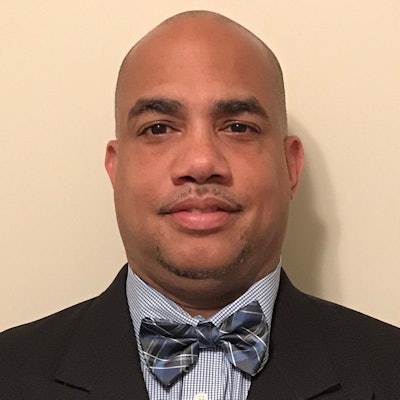 Aaron Scott.
Aaron Scott.Aaron Scott believes that nuclear medicine technologists should be able to elevate their careers to the next level. To that end, he was instrumental in creating the Nuclear Medicine Advanced Associate (NMAA) credential, a midlevel provider role in which nuclear technologists work under the supervision of licensed physicians.
Scott was among the first class of NMAA trainees who started in 2009 with the program. Since then, he's gone on to become the nuclear medicine program director at Johns Hopkins Hospital, a position he's held since 2017, after stops at Piedmont Healthcare in Georgia and Children's Healthcare of Atlanta. He was also president of the technologists' section of the Society of Nuclear Medicine and Molecular Imaging (SNMMI) for the 2015-2016 cycle.
The NMAA program is offered through a consortium of universities headed up by the University of Arkansas for Medical Sciences (UAMS). The curriculum includes two visits to UAMS, but most of the learning can be done online or at the candidate's home institution, while the individual is employed full-time. Scott estimated that the program can be completed in two years on a full-time basis or five years part-time.
Providers with NMAA certification can perform patient assessment, patient management, and other functions such as obtaining clinical histories from patients and communicating findings to referring physicians. While nuclear medicine physicians at first were leery of technologists with the credential, they have now embraced the concept, Scott said.
"Once they saw I wasn't taking their job and took grunt work away, they saw me as an asset," Scott told AuntMinnie.com. "They welcomed the additional help, and I got more and more responsibility."
Runner-up: William Faulkner, William Faulkner & Associates
Most Effective Radiology Administrator/Manager
Minnies winner: David Poon, University of California, San Francisco
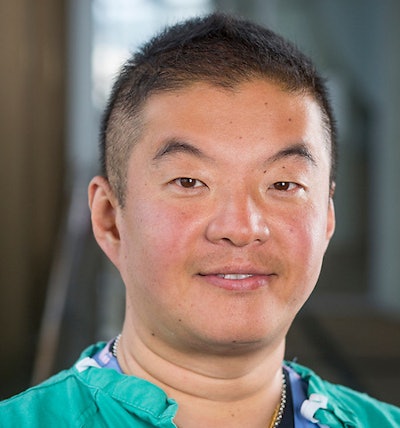 David Poon.
David Poon.David Poon draws inspiration from the patients he cares for as he manages the night shift of radiologic technologists in the radiology department at the University of California, San Francisco (UCSF).
"They inspire me," he told AuntMinnie.com. "They are going through such horrendous disease processes, and they are really very, very optimistic about life in general."
Poon has been with UCSF for the past eight years, where, along with the day shift supervisor, he manages a staff of 70 full-time equivalent (FTE) radiologic technologists. He began his career in management 2.5 years ago, after UCSF opened its new Mission Bay campus, creating new opportunities at the original facility on Parnassus Heights.
Poon sees his primary goal as ensuring that the UCSF radiology department runs smoothly, but he also makes time to mentor other technologists. Indeed, he was recognized in 2016 as one of three recipients of the Gold Standard award program, given by the American Registry of Radiologic Technologists (ARRT) to those who consistently show excellence in their contributions at work and to the community.
Poon's mentor was K.M. Tan of the Kaiser Permanente School of Allied Health Sciences in Richmond, CA. Poon began taking classes and found himself intrigued by both the technology and patient care aspects of radiology. Working at UCSF has been a bit of a homecoming for Poon, who trained at the hospital while getting his degree at City College of San Francisco in 2009.
In addition to supervising technologist operations, Poon manages a job-shadowing program at UCSF that's geared toward college students who are interested in a career in radiology but don't know much about it. The program enables participants to job-shadow for 40 hours, giving them a bird's-eye view of the field. Poon also makes the rounds at local colleges, spreading the word about the program.
Poon sees the job market for radiologic technologists as much improved over where it was a few years ago, when a glut of technologists made it difficult for many new graduates to find jobs.
"When I graduated, the market was pretty tight," he said. "Now graduates can at least get two if not three offers, from their clinical site and other sites as well."
Runner-up: Scott Walton, Intermountain Healthcare


